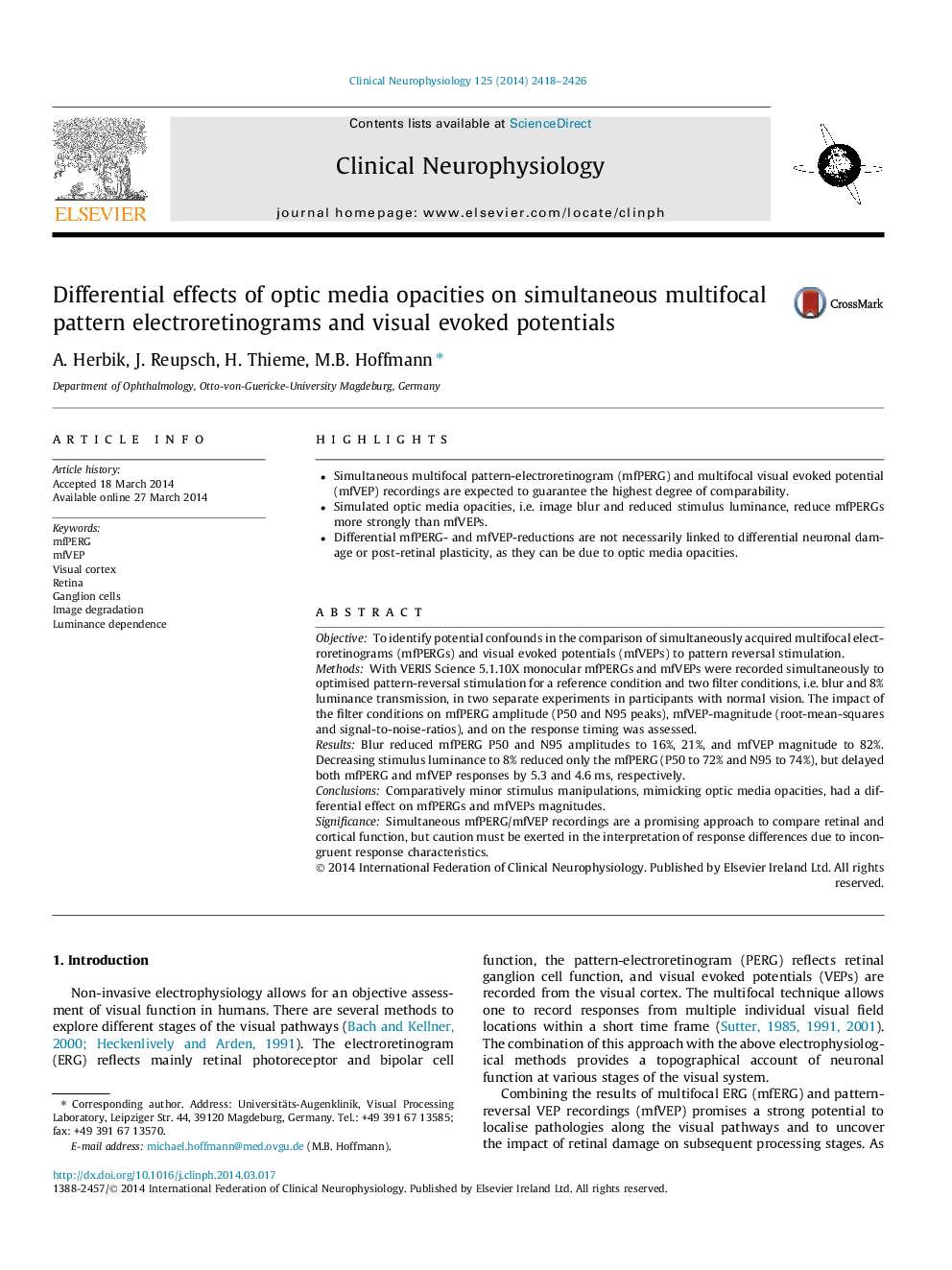| Article ID | Journal | Published Year | Pages | File Type |
|---|---|---|---|---|
| 3043459 | Clinical Neurophysiology | 2014 | 9 Pages |
•Simultaneous multifocal pattern-electroretinogram (mfPERG) and multifocal visual evoked potential (mfVEP) recordings are expected to guarantee the highest degree of comparability.•Simulated optic media opacities, i.e. image blur and reduced stimulus luminance, reduce mfPERGs more strongly than mfVEPs.•Differential mfPERG- and mfVEP-reductions are not necessarily linked to differential neuronal damage or post-retinal plasticity, as they can be due to optic media opacities.
ObjectiveTo identify potential confounds in the comparison of simultaneously acquired multifocal electroretinograms (mfPERGs) and visual evoked potentials (mfVEPs) to pattern reversal stimulation.MethodsWith VERIS Science 5.1.10X monocular mfPERGs and mfVEPs were recorded simultaneously to optimised pattern-reversal stimulation for a reference condition and two filter conditions, i.e. blur and 8% luminance transmission, in two separate experiments in participants with normal vision. The impact of the filter conditions on mfPERG amplitude (P50 and N95 peaks), mfVEP-magnitude (root-mean-squares and signal-to-noise-ratios), and on the response timing was assessed.ResultsBlur reduced mfPERG P50 and N95 amplitudes to 16%, 21%, and mfVEP magnitude to 82%. Decreasing stimulus luminance to 8% reduced only the mfPERG (P50 to 72% and N95 to 74%), but delayed both mfPERG and mfVEP responses by 5.3 and 4.6 ms, respectively.ConclusionsComparatively minor stimulus manipulations, mimicking optic media opacities, had a differential effect on mfPERGs and mfVEPs magnitudes.SignificanceSimultaneous mfPERG/mfVEP recordings are a promising approach to compare retinal and cortical function, but caution must be exerted in the interpretation of response differences due to incongruent response characteristics.
